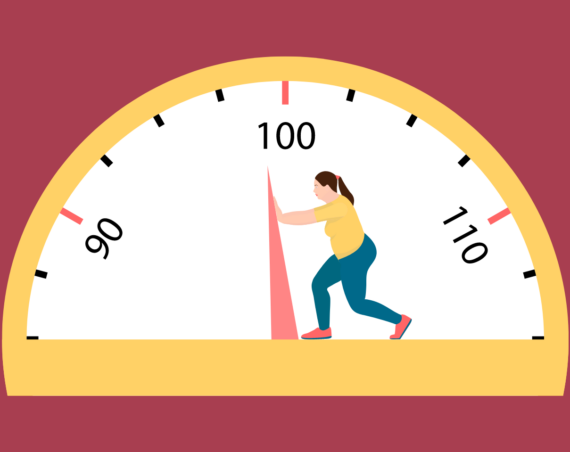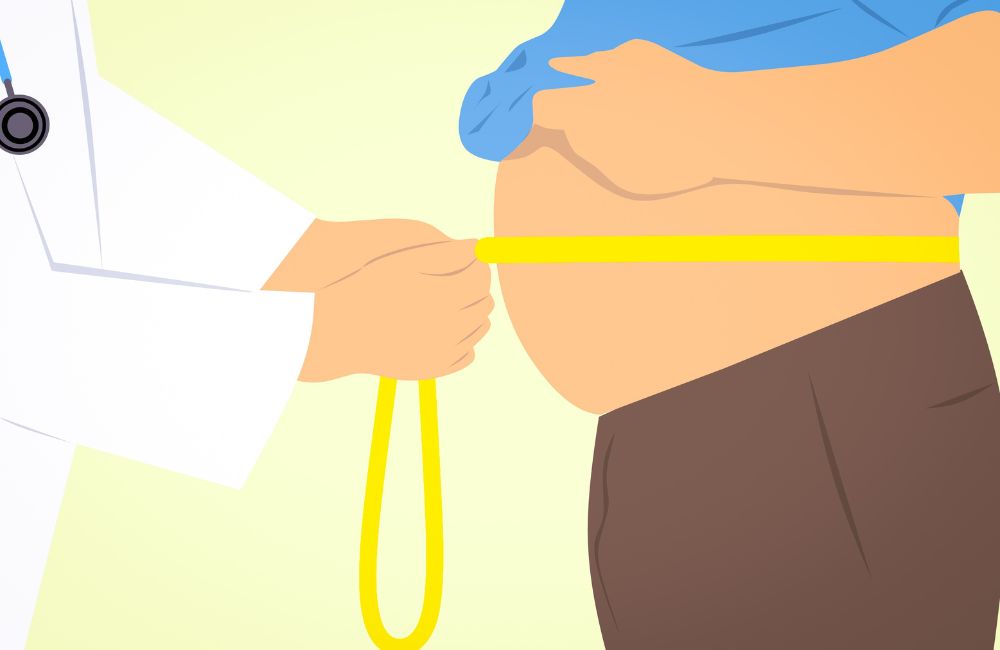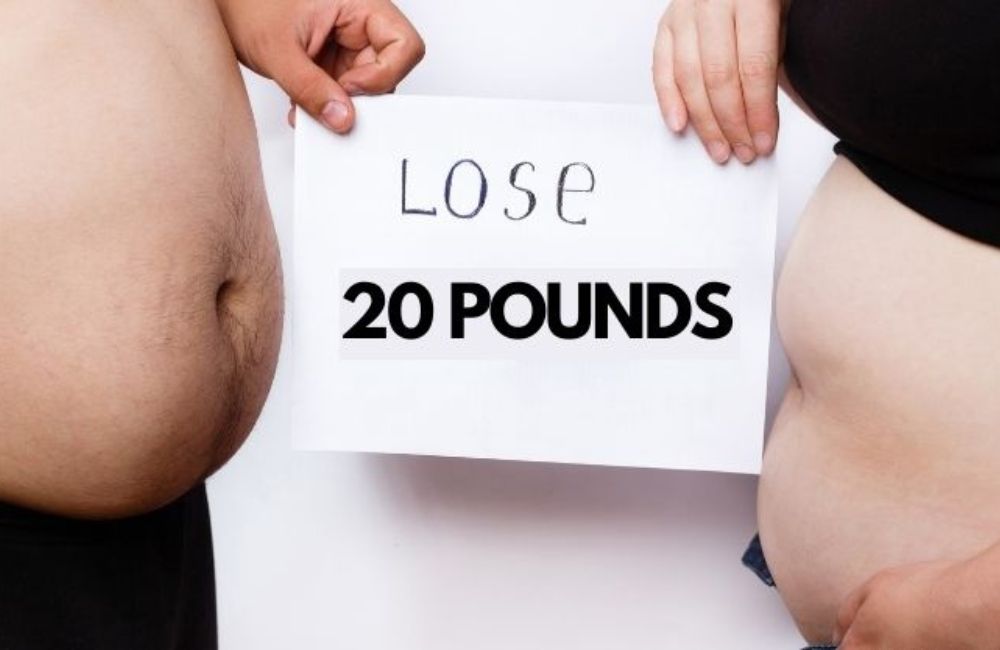
You may have something special coming up and need to lose a substantial amount of weight in a short period of time.
Really, you would love to lose 20 pounds in a month. First, when weight loss is needed, losing weight is a commendable goal, and improving your health and wellness is always a great goal.
But I should point out that losing 20 pounds of weight in such a short amount of time can be incredibly challenging.
Not only does it require major changes in your lifestyle, but also takes time and a lot of patience.
And this is true whether you’re looking to lose five, fifteen, or twenty pounds in a month.
According to the Centers for Disease Control and Prevention (CDC), the pace you should aim for is 1 to 2 pounds per week.
That means, on average, aiming for 4 to 8 pounds of weight loss per month is a healthy and safer weight loss goal.
But I understand your goal is to lose 20 pounds in a month, so below are my tips based on my experience as a dietitian and someone who has lost over 50 pounds and kept it off.
Applying some of these weight loss tips and lifestyle changes will help you reach your 20-pound weight loss goal.
You may also like:
How To Lose 50 Pounds as Quickly as Possible: 5 Simple Steps, Backed by Science
How To Lose Weight Fast As Possible: These 8 Science-Backed Tips Will Help You Lose Weight Quickly
How to Lose 20 Pounds In a Month
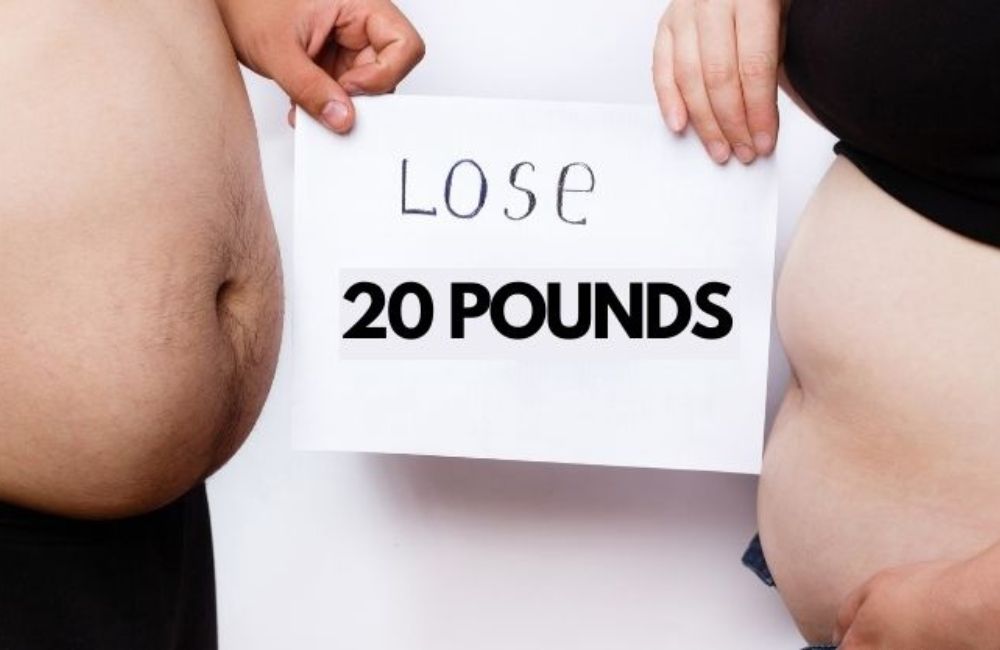
Many of us have tried diet after diet hoping to lose weight, like 20 pounds of weight, fast, but the weight wouldn’t budge. The lucky ones may have been able to lose weight initially, but soon the weight comes back and then some.
The bottom line is you have tried diet after diet, but the weight just won’t come off and stay off. You begin to wonder, “how do I lose 20 pounds in a month?” Is it even possible to lose 20 pounds in a month? How long will it take to lose 20 pounds?
How Long Will It Take to Lose 20 Pounds in a Month?
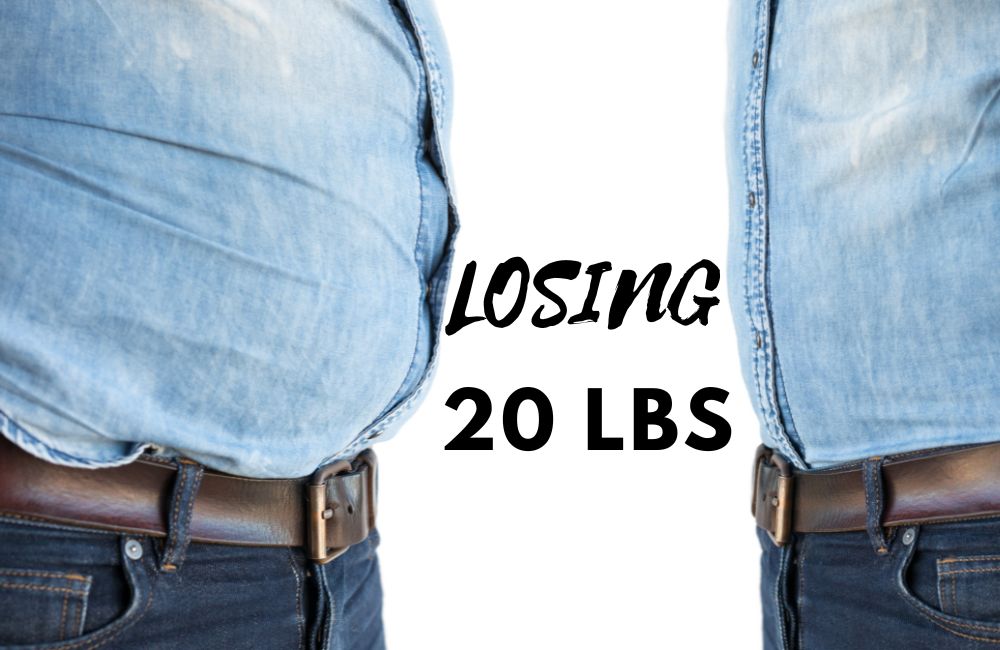
Weight Loss is different for everyone, but some science can guide us. Approximately three thousand five hundred calories equal 1 pound. This means to lose 20 pounds; you would need to have a calorie deficit of 70,000 calories in one month.
That comes to about a 17, 500 calorie deficit per week. You can have a calorie deficit by eating fewer calories or exercising more.
Weight will also fluctuate for other reasons. If your body is bloated or inflamed, you could be holding onto more water weight.
The good news is you may not have to decrease your calories by 17,500 calories to lose weight. You can also live an anti-inflammatory lifestyle to can reduce inflammation and puffiness.
The take-home message is we will all lose weight at different rates, but there are some must-dos when it comes to lasting weight loss success.
1. Drink water instead of sugary drinks.

You feel like you are not eating much but still gaining weight. The calories could be coming from your drinks.
Let’s say you order a soda with dinner at a restaurant and you get free refills. With free refills, you will probably drink more than one soda. If the waiter refills your glass just two more times, you could be consuming around 500 calories depending on the type of soda and how big the glasses are.
Studies show that replacing those calorie-filled drinks with water helps with weight loss (1).
2. Eat filling foods (i.e., fiber and protein).
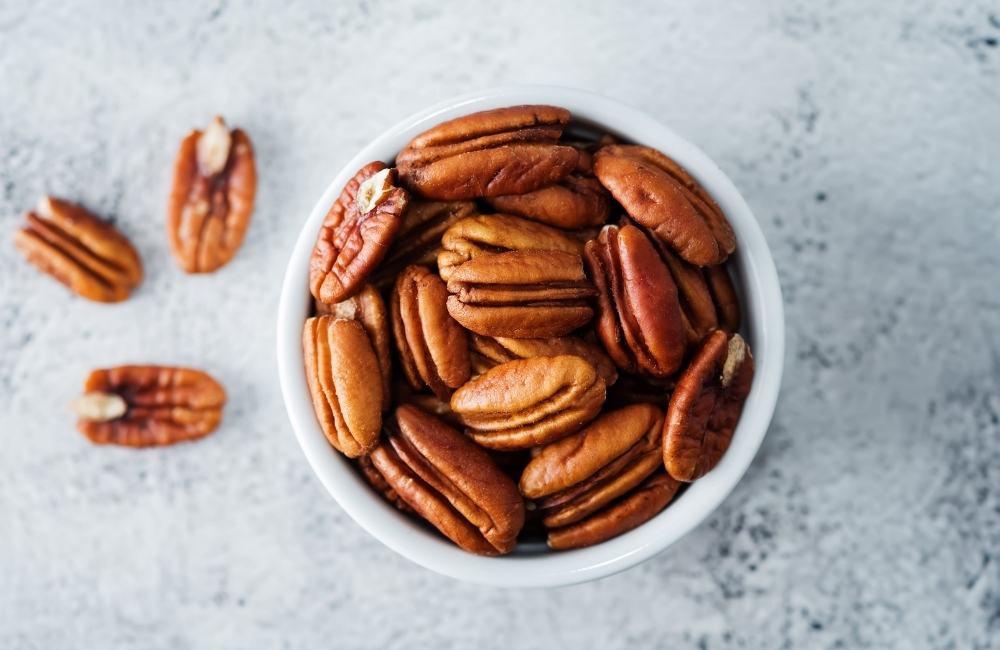
One study found that fiber intake was the primary predictor of weight loss success (2). Fiber is extremely filling.
So, if your meal is filled with fiber, you will likely find yourself pushing back from the table much sooner. Protein also promotes satiety and should be included in every meal.
The take-home message is that a weight-loss-promoting meal is a meal containing both fiber and protein.
3. Exercise on most days.

Exercise not only burns calories but relieves stress. Stress can cause an increase in cortisol levels. Chronically elevated stress hormone levels cause your body to hold onto weight.
Exercise can come in many forms. So, if spending an hour at the gym is not your cup of tea, try some of these ideas:
- Park far away in the parking lot or take the elevator instead of the stairs
- Try Aqua aerobics
- Join a sports rec league
- Go for a daily power walk or jog
- Walk around the field while your kids are at their sports practice
- Try yoga
- Take a dance class
- Learn a form of martial arts
4. Limit sweets and fried foods.
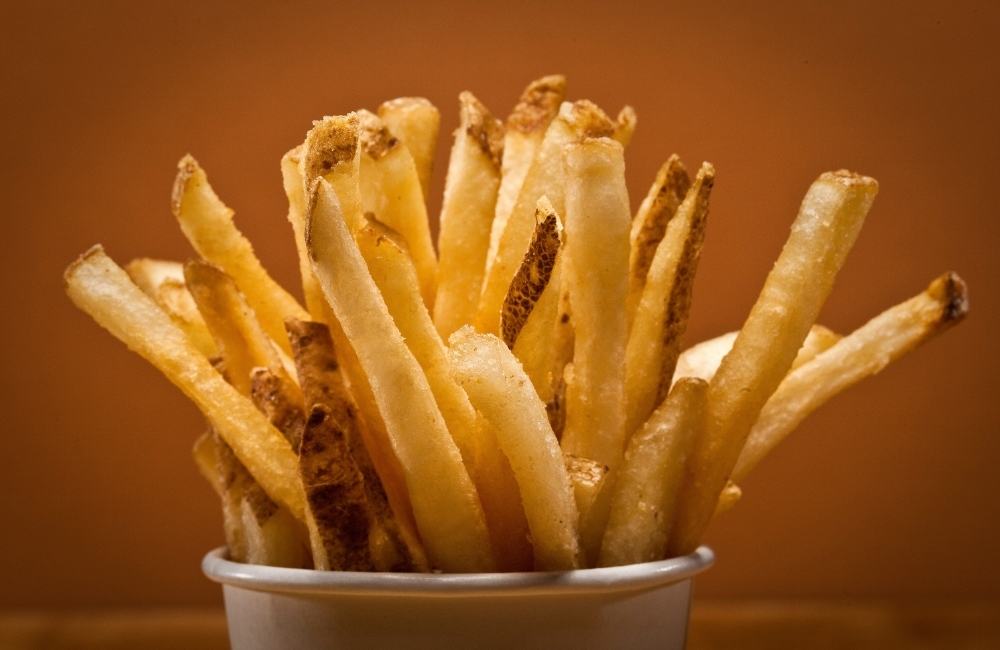
Sweet treats and fried foods are often lacking in nutrients and packed with calories. That is why these foods are called empty-calorie foods.
If your food has very little nutrients, protein, or fiber, you are going to have to eat more to feel full. In other words, you will tend to overeat. Limit these foods to special occasions and only eat small portions of them.
5. Limit refined carbohydrates.
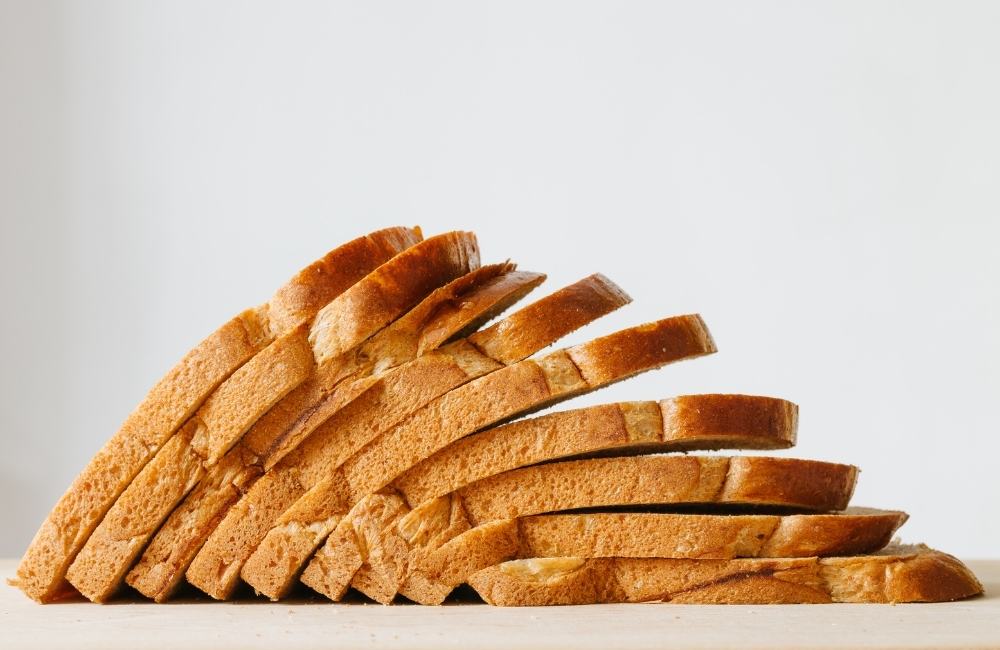
Refined carbohydrates are another type of food that has little nutrients and fiber. Why? Because the nutrients have been removed during processing. Stick to fiber-rich whole grains instead.
6. Make the base of your meal a low-calorie food.

If you like sitting down and enjoying a nice big meal, you can! You just need to choose low-calorie foods for the base for your meal. In my book, Big Mindful Meals, I define the base as the food that holds the other foods.
Oftentimes, the base is the largest portion on the plate. So, for spaghetti, the base is the pasta. For soup, the base is the liquid, and for a sandwich, the base is the bread.
For these examples, you can drastically change the caloric content by altering the base. With spaghetti, you could cut the calories by using konjac pasta. Konjac pasta has only about 4 calories per serving.
When you make a pasta dish with konjac pasta, that big bowl of pasta is suddenly low in calories. With a sub sandwich, you could exchange the sub bread for a whole grain wrap or lettuce wrap.
7. Get plenty of sleep.

Adequate sleep is a must when it comes to achieving weight loss. One study found that inadequate sleep (less than 7 hours) increases the risk of obesity by 41% (3).
Lack of sleep increases our appetites during the day and can cause an imbalance in our hunger hormones.
8. Eat Slowly
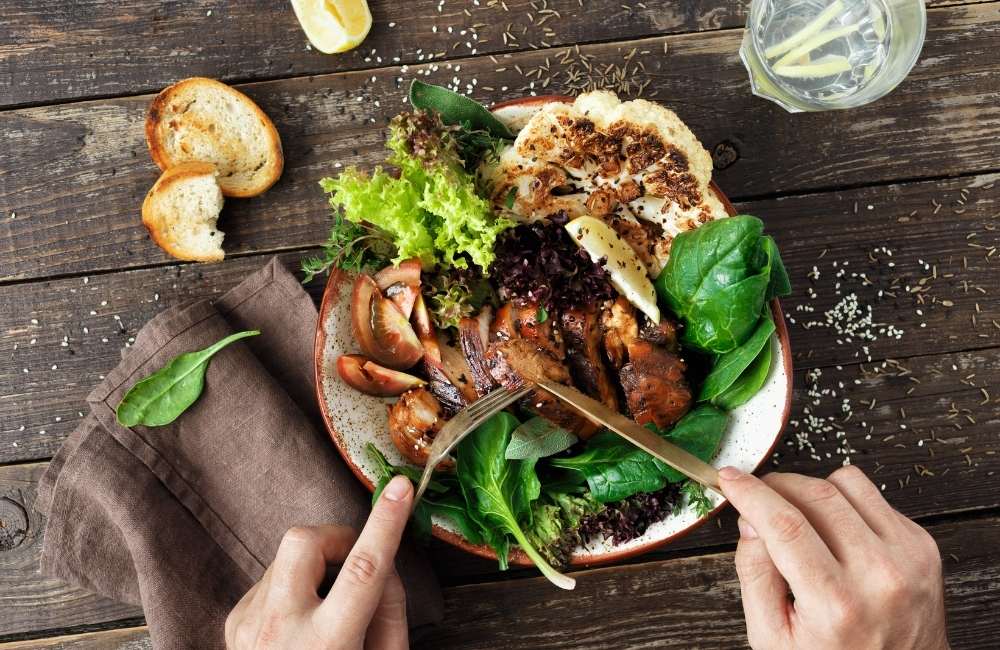
You want to be able to eat until you don’t want another bite. The problem is you love eating and you love food. Try eating slowly and you might be shocked at how full you will feel with smaller portions. Many of us eat without thinking.
We eat so quickly that we don’t give our minds a chance to catch up. Our brains need about 20 minutes to process fullness cues. People who mindfully eat also tend to stay full for longer (4).
Summary
Losing 20 pounds in a month can be challenging, Heck, losing 5, 10, or 15 pounds in a month can be challenging.
However, losing substantial weight is achievable, especially if you follow some impactful must-dos.
The bottom line is weight loss is hard to achieve if we are not getting adequate sleep and exercise. Weight loss is also difficult if we aren’t ensuring our meals are low in calories and high in nutrients, protein, and fiber.
The Meal Building Must-Dos for Optimal Weight Loss Success are:
- Make sure your meals contain fiber and protein
- Choose low-calorie options for the base of your meal. The base is the ingredient or food that holds the other foods. Examples of bases are pasta, rice, broth in soups, and lettuce in salads.
- Limit refined carbohydrates, sweets, and fried foods.
- When you eat your meals, slow down. Give your brain time to notice your hunger and fullness cues.

